
Garden Design in Steppe with Transforming Landscapes with Garden Futurist Emmanuel Didier

Contributor
- Topics: Inspired Gardens and Design
Summer 2022
Listen to full Garden Futurist: Episode XVII podcast here.
Emmanuel Didier, Principal and Creative Director at Didier Design Studio is a leading figure in public garden design. He speaks to Garden Futurist about representing the steppe biomes of the world as a permanent public garden exhibit and how he works to build ecologically functioning landscapes that also reflect people culturally. Listen to this fresh take on new aesthetics and techniques that will apply to your garden.
This interview has been edited to reflect the audio version on #Garden Futurist.
Sarah Beck: You’re listening to Garden Futurist. I’m Sarah Beck, here with Adriana López-Villalobos. Hi, Adriana.
Adriana López-Villalobos: Hi, Sarah.
Sarah Beck: We have talked for so long about getting landscape architects and designers into the Garden Futurist conversation.
Adriana López-Villalobos: That’s right. We’ve talked a lot about this idea of having someone that can take a multidisciplinary approach to landscape design and gardening. I think our guest today sits at the center of that.
Sarah Beck: Emmanuel Didier is principal and creative director at Didier Design Studio. He is really a leading figure in public garden design. So he works with scientists and ecologists and botanists and curators, like you, on a lot of these really large-scale, complex projects.
Adriana López-Villalobos: It’s clear from your conversation with him that he enjoys that and that he ends up working with all these people that specialize in creating a garden and a landscape—to make it functional, to make it beautiful—but also to take into consideration evolution of landscapes, including climate change and cultural diversity.
Sarah Beck: This conversation really starts with one landscape project and it’s a bit of a deep dive into a biome, but you may be surprised with where this conversation goes.
Sarah Beck: Emmanuel, I’m so glad to have you on Garden Futurist today. I was actually on a trip to the Rockies recently and I was visiting Denver Botanic Gardens. This was my second time going to the Steppe Garden that you designed, and I’ve enjoyed seeing it growing in over the last few years.
I think now that I live on the West Coast, I have this really different view of that steppe landscape. The color palette and just the way that grassland ecosystem comes across to me, I think a lot of Westerners really will relate to that.
I started thinking about the grasslands and how there really are a lot of these ecosystems. The steppe ecosystem is everywhere and it’s not just the Great Plains, which people think about, but there’s the Columbia Plateau—and that’s in Oregon, Washington, and British Columbia—and there’s these sagebrush ecosystems we even have in California.
I started thinking about that ecosystem and how extreme that is. I remembered you saying that the stress was what made that type of landscape really beautiful.
Emmanuel Didier: Yes, Sarah. Thank you so much for having me here today. For me, it was an adventure as well because working with the team of horticulture at the Denver Botanic Gardens really allowed me to connect to a region I didn’t quite understand, as well.
I think part of it is how we name it. I think people coming from the East and crossing through the Great Plains, you think you’re still in the Great Plains all the way until you really hit the Rockies.
I lived in Denver for some years and suddenly when being exposed to this project, I came to realize I lived in a steppe region. And even that was a surprise because when I grew up, way back in France, even I had heard of the great steppes in Mongolia.
Sarah Beck: Oh, right.
Emmanuel Didier: I never heard of the steppe landscape in Northern America.
The team of horticulture realizing that actually we lived in a very understudied biome—the steppe region, the steppe biome—they really led a pretty extensive study and research.
So this project is really grounded in a lot of science. And for 15 years, they have traveled the world and they realized there were four main regions of the steppe biome in the world. There is Patagonia, there’s South Africa, there’s Mongolia., and there is where we live in Denver, in that whole region, which is quite vast, actually. It’s part of the foothills into the Rockies. And it’s expanding Colorado east a little bit for summer and quite far north and quite far south.

The way they define that region is interesting. What they have in common, those four regions in the world, is the fact that geologically, they were mountain formations, and all of those regions used to be actually on sea level. It used to be a seabed. It was a zone of deposits with lots of sandstone and all that. And that’s why in all those four regions, there’s a lot of fossil fuel. Petroleum is very present in those four regions.
The plant communities, actually fauna and flora, had to adapt over millions of years. About that ground shift up, by having a range of mountains coming pretty high blocks the rainfall. So suddenly those regions went from being low and quite wet to suddenly being lifted up and with a rain shadow effect from the mountains where you just don’t get the same precipitation. So all four regions in the world are now semi-arid. And that’s why you don’t see a lot of trees and you see some mountains in the distance, but you see also what? Those very vast, rolling plains. And that’s what defines the the steppe biome.
It was always a landscape of migration where people were nomadic, moving through, looking for food across the seasons, and always a place that people would traverse a lot, but never studied extensively because it’s almost a space, a very vast space, in between these different destinations.
After doing all those extensive studies, they had a publication that came out. They wanted to create a living collection of their study. They had the book; they had done all the research. They had collected seeds and cuttings. They were already developing or propagating some of those plants in a greenhouse, but they didn’t have a garden, one central garden that could become that exhibit of the living collection.
And so that’s why they really wanted to do that garden right in the center of the Denver Botanic Garden, right in the center of Denver, which is right in the center of the steppe region. And I thought, wow, it’s fantastic to think about, “How can a garden demonstrate the story of all that research and help people connect emotionally, experientially, intellectually to that understudied landscape of the biome?”
Sarah Beck: I’d love to hear you talk just a little bit more about that process for trying to encompass an ecosystem in this microcosm of a contained—and it is a very urban spot, so that’s really an interesting challenge, I think.
You were just describing such a vast type of landscape and here you are surrounded by apartment buildings. I’m sure it’s hard to sort of separate these two things because obviously the humanness surrounding that space is part of why it’s hard to express something that vast.
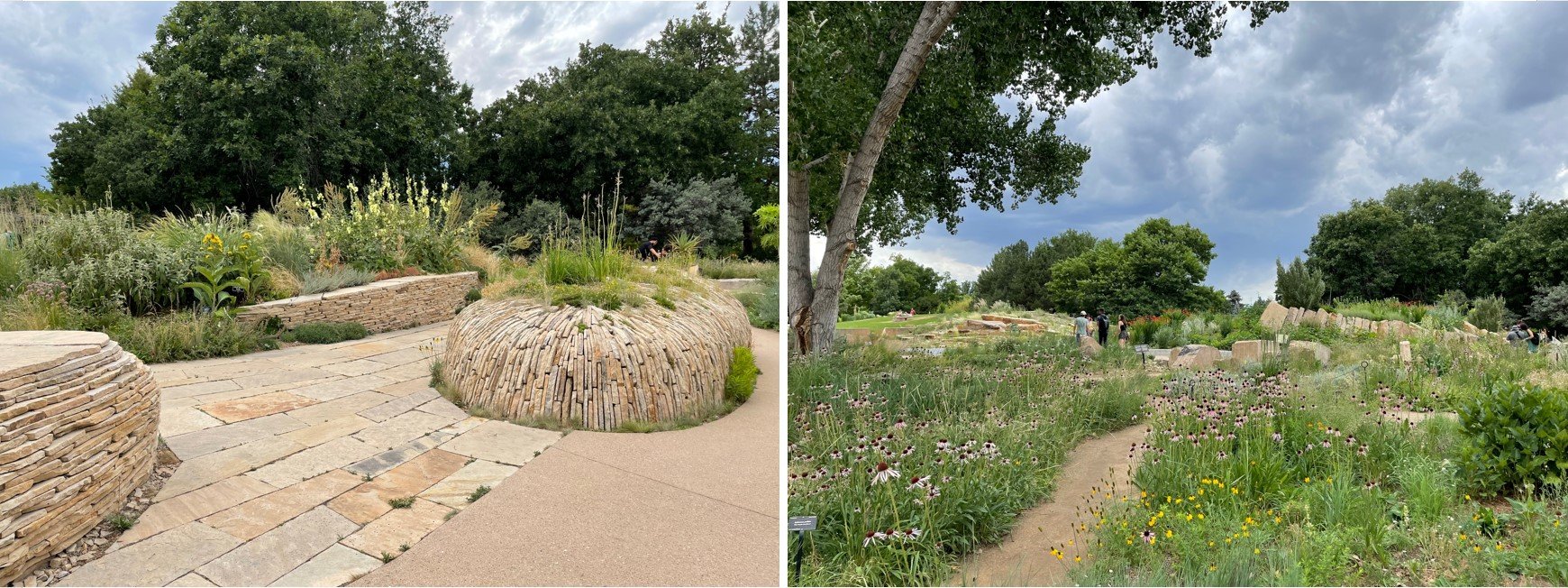
Emmanuel Didier: Yeah, how do you take that vastness as a space? When you cross steppe landscape, you have a huge sky. You feel very connected to something very broad. And instead here, we’re in the middle of downtown Denver and it’s not even an acre. So that was a tremendous question. How do you help people travel to the steppe landscape—and learn about the steppe biome and why even it matters—in that tiny place?
So the goal was obviously not to take all of the steppe region into one tiny thing. You have to think of the garden as an exhibit and almost like a window, an introduction to something that is a reminder of why it matters and to then travel there and go see it in person.
But as a garden, what it could do, though, is take all those living plants that they had collected and actually realize some of the similarities, some of the plants, like Artemisia, you can find it in all those regions, which is powerful.
So it evolved or co-evolved like in parallel in some ways. And it’s very similar.
So I want everybody to realize the fact that all four regions have in common, the fact that there was that ground shift and in almost like a landscape in transition or a landscape in mutation, the fact that this landscape looks this way because it had to adapt and transform under the stress of uplift and all this.
I thought it was a beautiful story. So I wanted to make sure that wherever you come in the garden, whether you come from the north or south or east or the west, you feel like that landscape was still almost moving and it was in transition and things were adapting.
I wanted to play with the ground plan, both to create all of the conditions needed. If you think about it, some of those plants want the north facing slope. Some of those plants will really the dry, exposed, up, high-draining soil. Some may want to be more in a swale.
So we try to take that tiny parcel and almost like you know how you take a piece of paper, and you crumble it and you reopen it and you have all those conditions. That’s almost what we did, except we tried to satisfy two needs the needs of all those types of diversity of conditions we wanted to create for all those different types of plants while creating an enjoyable garden that doesn’t feel like a bunch of fragments, but one landscape.
Sarah Beck: There were a number of really surprising plants that would just sort of pop up here and there among the rocks. There was even one spot I’m thinking of where there were some drilled holes in in a large piece of stone. There were some grasses coming up through those holes. It was so obviously deliberate, but almost like just a surprise. It was really nice.
Emmanuel Didier: Yeah. In some ways if you go and walk through the steppe landscape, you’re going to walk miles and you’re going to see certain plants. What’s interesting, some are very small, and you wouldn’t even pay attention. What I realize is that for people to understand that all of that richness happening right at ground level, you have to lift up the ground plane, not only to hide views and so forth, but actually almost bring at eye level some of that richness so you notice it.
If you think about it, when you go to a store and you look at jewels, they usually tend to be displayed on planes and made very precious and isolated from their context, in some ways, like you’re presented with it. It’s a display. And I use that technique for this, because they wanted, some call them stone plants. You wouldn’t even know they are there. They look like little rocks, almost. So by lifting it as part of some of the stone plants, we were really able to make some microdisplays. It’s almost a gallery within the gallery.
SIGN UP FOR OUR FREE MONTHLY NEWSLETTER
Sarah Beck: I know you’ve done a lot of projects that have involved ecological functions as part of gardens. You’ve done a lot with pollinator and habitat gardens. You have this human audience in mind, but you also, in the case of building habitat, you have pollinators and living organisms that aren’t human that you are wanting to attract.
We are now living the human conflict of humans elbowing all of these ecosystems out. So we’re trying to come back to supporting a lot of that habitat and pollinator spaces. I’m so curious how you think about this and whether you think of that as a design conflict?
Emmanuel Didier: I could answer that question from multiple angles. One, I come from a place in the world that was started as a place for inhabitation about 3,000 years ago, by a certain civilization that then got built over by the Romans. And then the Christians came and reinvented that city with the new values and all this. So what I find interesting is through humanity, in some ways, architecture and the way we shape landscapes and gardens is always transforming around new values.
So I think in face of climate change, it’s not like we need to wipe the city we live in and redo it. It’s more like, how do we adapt the space we live in to really enrich the potential and in some ways turn it into a fertile ground? It has to satisfy the way we live now, and the idea of cultural diversity, be much more thoughtful of universal access, everything.
So I think the way we live today, mostly in the post-COVID world, is just very radically different. We have to acknowledge and almost ask ourselves, “How do we reshape those public real and landscapes and streetscapes and park in a way that accounts for that cultural diversity and so forth? And at the same time, realizing we cannot also omit to include all of the other living creatures?”
We can’t hope for the best that farms and things, landscapes outside the city are going to satisfy those needs. We have to intensify the landscape we live in to make it good for everyone and realize we don’t need every square inch of the city to be dedicated to humankind. I love spaces that actually are very perfectly suited to welcome butterflies and pollinators at large, and birds and mammals and so forth, and actually I think that makes for a better world. So people love seeing birds, people love seeing butterflies and they love feeling like they are in a place that is healthy.
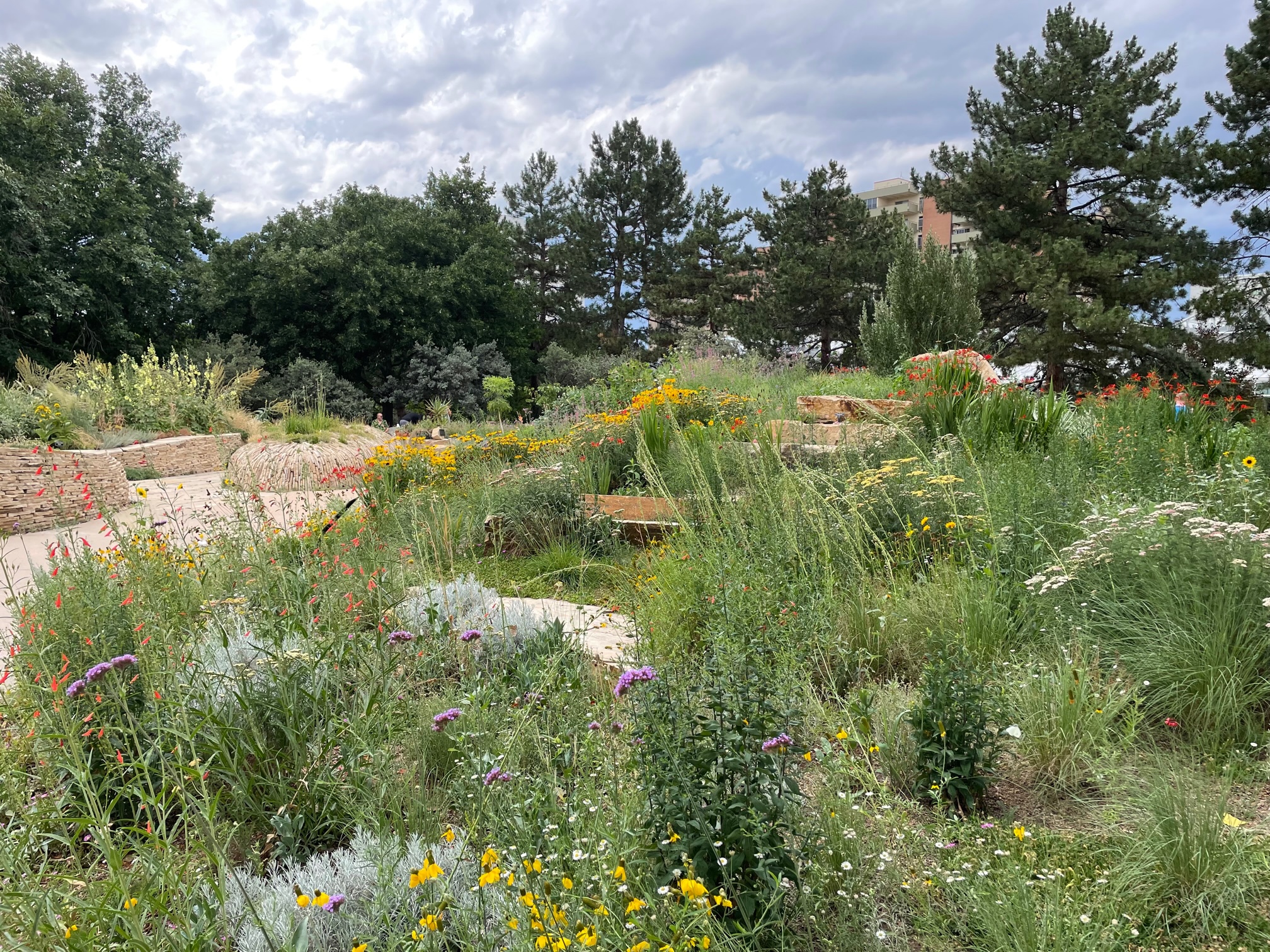
So we can’t use old models. It’s funny like people, when they used to study landscape architecture, I think it was like whether you would do a garden in a Chinese style or French style or an Italian garden. I think that kind of old model has gone out and it’s more about, “Hey, how do we get creative? How do we create a true sense of place, first of all, instead of importing? What does a French garden have to do in Colorado?”
Going back to the Steppe Garden and why those gardens matter, because I think we need to teach people to embrace some new sense of beauty and values. It’s new aesthetics, new models. So that if they can find beauty in learning about ecological systems that surround them, then they can apply it to their garden.
I have children and they come from school. They hear about, “bees are dying.” And I think our kids today imagine there’s quite a stress level in understanding like some of the climatic conditions, the quality of the oven environment going down, but what can I do about it?
The expectations are much higher now in terms of what it needs to satisfy. So when I do project with people like that, I always get very excited to always ask, “Well, okay, we can satisfy this. Yes, we can satisfy this. What about this? And what about this?” And really try to expand the spectrum of our goals. And people get really excited. I never get anybody telling me, “No, let’s not do birds.” The question often is, “How do you do it in a way that is beautiful?”
So to loop it back, I went to school of architecture in 2000. I had a great mentor. Her name is Beth Meyer and she had written a book called Sustaining Beauty (2008). And her question was this: “How do you create new models of beauty in the landscape that help people get better educated of why it matters to be ecologically sensitive and how it’s actually quite beautiful?”
So I think the way we value landscape has really evolved and continued to evolve. And I think that’s our job: to help people be inspired and fall in love with those better landscapes that sustain everyone, not just us.
Sarah Beck: Yeah. That’s something we talk about a lot at Pacific Horticulture. Lately, we keep having these conversations about plants that are in dormancy and that we live in an environment where we need plants that are drought loving. Sometimes that means they are brown. Brown is a color.
Emmanuel Didier: Yeah.
Sarah Beck: So just thinking about what you’re saying, giving people a sense of an aesthetic. The ecological value is part of the aesthetic development
The pollinator piece is so interesting too, because—I think you’re right—people are so motivated by it. I’m also curious if you think that as far as the gardener is concerned, do you think there’s any insight from your working on these big projects? Because you have so much access to incredible research scientists, do you think there are some takeaways for a gardener to imagine pulling some of the things you learned from this big scale habitat?
Emmanuel Didier: I would take that question two ways.
The first one is, for example, when we did steppe garden, or the pollinators garden, that was one of the big fundamental missions for those gardens: “How do we inspire people to take action at their own scale?”
So actually a portion of the garden at the pollinators was all the way down to big planters. “Hey, if I only had like one front patio or if I had a balcony, what can I do for pollinators?” I think there’s almost this sense of joy and healing power in feeling like you can contribute to something and make it beautiful.
So if someone has a front patio facing the street, they could take a large part of it and they could do something beneficial to pollinators. They won’t satisfy the whole pollinator population. That’s not the goal, but they can be part of a larger system.
I go to some nurseries I work with, and they do a very great job in identifying for people xeriscape planting, plants that really do not require lot of water. They are very well adapted, provide all-year-long interest.
Actually, I think those plants are really the most beautiful under the snow, they keep seed heads that are beautiful. Frost on it is amazing. So if you think of the brown, which is a big color in our region with drought and so forth, you have to realize it can be made beautiful.
We always look at that, like, “How can we inspire?” Not just actually overwhelm people where you will come and say, “Okay, this is beautiful, but I can’t do that at my scale.” I’m hoping that doesn’t happen because I think the goal is to—yeah, there is a wow factor. Nobody’s got a green thumb, like someone in horticulture in a botanical garden. They can grow things that I can’t grow in my own garden and I’m jealous—but I do think that it provides a lot of great inspiration and tools on, “How can I do something successful at home?”
Then, to step back, you were mentioning the color brown and how to make it beautiful. How to learn to appreciate something maybe that was undervalued before, because it doesn’t look what we call trimmed or pruned.
I mean, that’s why people always go back to the lawn on their front yard is because I think there’s a stress level on so many people in like, “Okay, if I don’t do lawn, what am I going to do? And how do I manage this?”
For a lot of people, turning on the mower and in some ways vacuuming the front yard, it’s kind of a way of looking like you’re taking care of your place. You don’t have to think about it, but you have to pay for it because you’re putting chemicals, you’re putting water and you’re not providing any habitat.
So the lack of thought into the day to day has a total cost long term. So people want to do something about it, but it’s not easy to learn how to take off the lawn and transform it, but it is possible.
I think what I would tell to anybody who is maybe listening to this and lives in a place like that, where “I want to remove the lawn” or “I want to just adapt what I have,” I would say it’s always great to pause and think about, “What is it that I already have that is working?”
There’s always something to work with. It’s never a neutral clean slate. There is nothing such as a clean slate. There are millennia of occupation and living creatures that were there before. So unless something was completely paved with toxic asphalt and you have to remove and adapt, even there is always wind and sun and north and south and so forth. And views. So I think you just have to work with what you have.
There’s a painter. His name is Matisse. I come from the art background before. And even though I love the science behind ecology and all this, that painter, what I always loved, he would talk about design or painting or art being understanding our set relationship between things.
When you put a planter, it’s not about the planter, it’s about how that planter relates to something else.
When you work on your own yard, you are understanding, “Oh, I have this one tree it’s looking good. It’s working well. So. Let’s not pretend it’s not there. It’s got a root system. How do I work with it? So how do I create a stronger dialogue between now one tree to two trees potentially? Or how do I augment that by adding shrubs? How do I provide a place for birds to nest or eat?”
Yet at the end of the day, to make it beautiful you have to think about how it’s going to relate, so it just become a bunch of things. It’s like a house. It’s not because you have 30 rooms that it’s better. It’s how they coexist and how they create something that works as a whole.
So I think not overdoing it and thinking about everything is going to relate is very powerful.

Sarah Beck: If you don’t mind, let’s jump to a different scale. I know you’ve done a lot of green infrastructure projects, and these are more like municipal scale projects with green roofs and thinking about reducing heat island effect and filtering storm water, and just thinking about functional, urban landscapes in terms of positive climate resilience.
Let’s take a moment to think about the cities of the future. I know you’re a garden futurist like I am and I’m curious what you think the future holds and if there are some design innovations or ideas that you think we really need to be embracing right now? And what you think we should be doing in our cities in terms of those?
Emmanuel Didier: Well, obviously water is at the center of everything and how it relates to the soils and the ground plane. Technology is doing great in helping us manage water in a more clever, sustainable way. And the use of better-adapted landscape and plants is also helpful.
But I think that whole California, Colorado, I mean, all the Western regions are such under tremendous stress. And I think everybody’s alarmed by it. Not everybody necessarily knows how to deal with it.
So I would say, yes, it’s great to think about using technology to really help us have a better functioning system where we’re not leaking water in the wrong place.
So for example with the University of Denver right now, we’re trying to grow an initiative, an arboretum, on campus. We call it the Living Urban Campus Initiative. And that’s a big question we want to ask is, “How do we stop importing the idea of the Harvard Square, Cambridge campus, and instead invent a campus of the West?” And there’s still so much to be done there.
I think, actually, being a landscape architect is a great profession. I’m hoping some young people listening to this will be inspired to take on this role because really it’s not going to be just one single person’s answer. It’s going to be a lot of work with artists and scientists and researchers and politicians and gardeners. Gardeners play a big part at their own level to inspire the neighbor next door to do better.
Sarah Beck: If you could have no constraints on a project working in, say, a multidisciplinary collaboration towards a resilient landscape, what does that look like if we’re actually planning for that integration of designers or who else do you think should be part of those conversations in our future urban landscape?
Emmanuel Didier: Yeah, we need to broaden that field. I understand, with economics, planning becomes a lot about zoning and those kinds of things. And sometimes landscape becomes the last voice, and we have to often do the best we can with what’s already set in place. I think it’s a big mistake.
I’d like to just bring up Richard Louv, who wrote Last Child In The Woods. We were unveiling a grand new master plan for a children and family garden at the Desert Botanical Garden in Phoenix was a big question of, “Hey, what could that mean to create a safe, inspiring environment for people to connect to nature in the desert environment?” Where you think of scorpions, you don’t think of a nature friendly, and yet it’s actually totally possible. And it was fun to think of this, like, “What would that look like?”
And he asked the question because people were asking, “Why do children’s gardens matter?” He said, “Actually, well, the thing we should ask ourselves is why don’t we design our cities like children’s gardens?”
I love that question. I take it to heart on all of the projects I do, because if you think of the city made as a place where you step outside the door and you feel very immersed into very multisensorial rich, tactile, visual, fun. The word fun is really important here. I feel like sometimes, in that context of climate change and everything, we’re thinking of solutions. But you can reflect on, “Why is it that they would want this? Or why is it—” and just creating really fun, rich environments that satisfy not only human beings, but all creatures that we need to sustain. It takes care of water, takes care of soils for the long term, and invests in the landscape as a true, amazing resource that we need to treat better.
But I think children would be amazing. It would be fun to see what they would draw as a city of the future. And then it would be fun to then, yeah, have that dialogue of them part of it. I would start there, and then I will bring the scientists and say, “Okay, what does that mean in this climate? How can you really push the envelope in terms of what you can do scientifically?”
It’ll be fun because you will have the fun imagination and then you will have the science. And if you merge that I think you could get a pretty good cocktail.
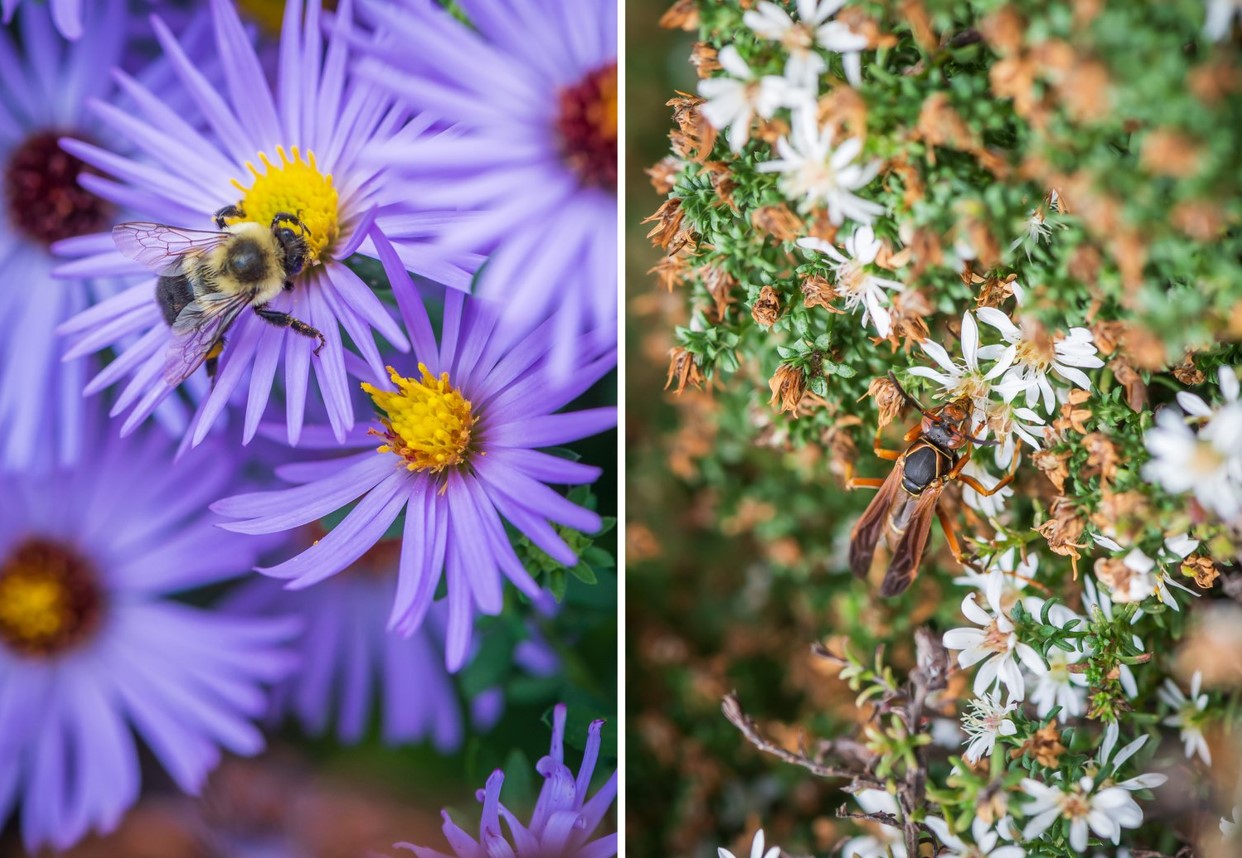
Sarah Beck: I really liked how Emmanuel gave some gardening advice. He really has a very artistic sense. He talks about composition, he talks about relationships between different visual elements, yet he also talks about simply starting with what you have and observing. He also gave some advice about lawn removal, and this is something we talk about a lot. For some people, I think this really is an intimidating prospect.
Adriana López-Villalobos: Yeah, it could be very stressful to switch from something that you know how to do to something that you don’t know, and just start something new. But the main take-home message, I guess, from your conversation with him is that if we think about the maintenance and the cost. It’s like when we do a cost-benefit analysis of how, in the long term, it’s going to benefit you as a gardener but also the ecosystem. You are creating something that is more functional for different types of purposes. It could be like pollinator habitat, or just creating biodiversity. It might not be that difficult if you just start one piece at a time.
Sarah Beck: Just start a little at a time and focus on that and let it build.
Adriana López-Villalobos: Yeah, and I just want to end with paraphrasing something I found beautiful that he says: when we go to a garden, we have to think of it as an exhibit, sort of like an introduction of something that reminds you why it matters, and then travel there and go and see it in person.
Resources
At the beginning of this conversation, Emmanuel Didier describes the Denver Botanic Gardens Steppe Garden, where he worked in part with Mike Bone and Kevin Philip Williams. In July, the gardens hosted the Global Steppe Symposium.
Didier also collaborated with the Arboretum at Penn State and the Center for Pollinator Research on the Pollinator and Bird Garden. He features other collaborations on his website, Didier Design Studio.
Louv, Richard. 2005. Last Child in the Woods: Saving Our Children From Nature-Deficit Disorder. Chapel Hill: Algonquin Books.
Meyer, Elizabeth K. 2008. “Sustaining Beauty: The Performance of Appearance.” Journal of Landscape Architecture. 5 (Spring 2008): 6-23.
Share:
Social Media
Garden Futurist Podcast
Most Popular
Videos
Topics
Related Posts
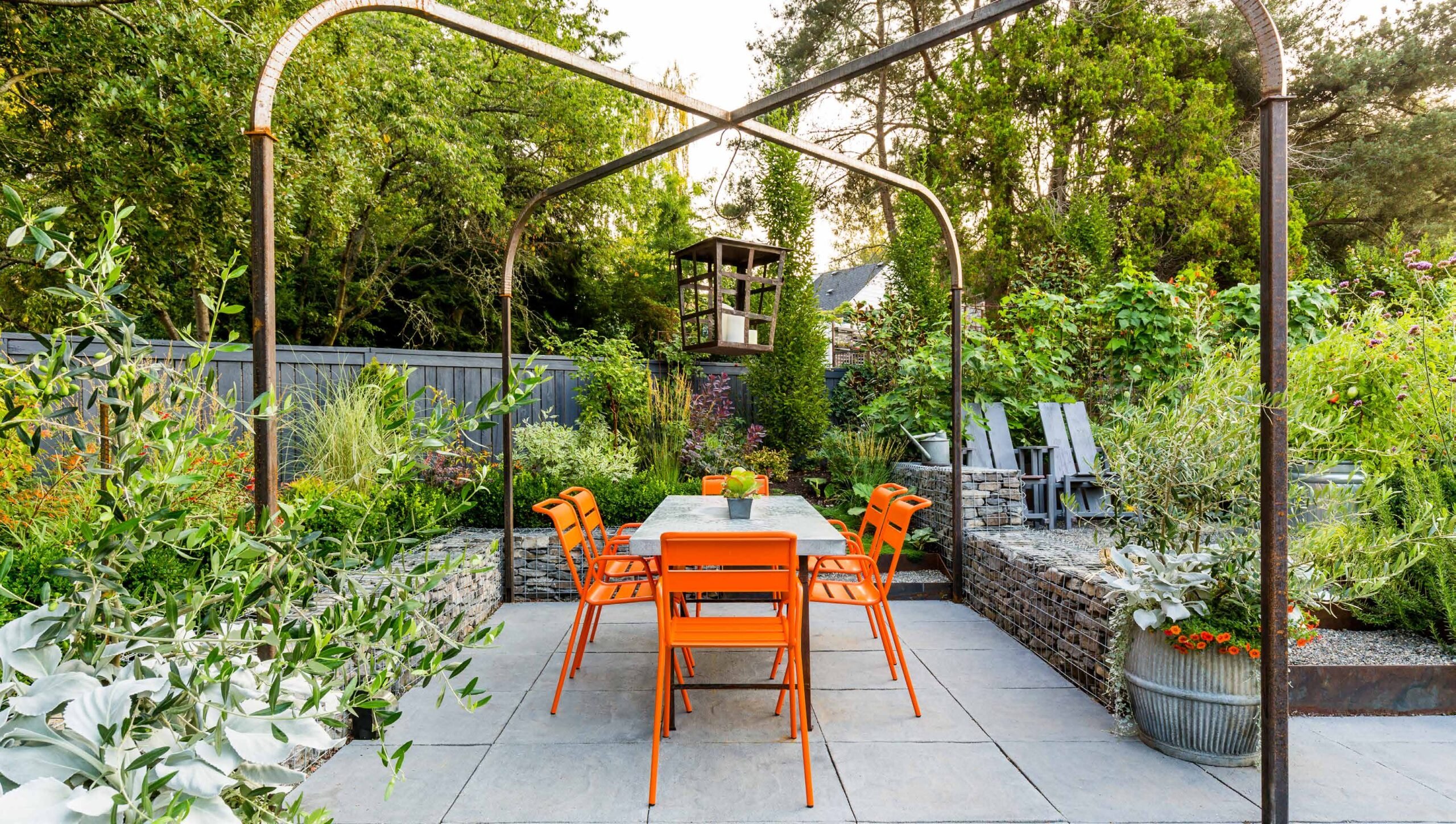
Design Futurist Award Announced: Committee Shares Vision
March 8, 2023 At Pacific Horticulture, we believe that beauty can be defined not only by gorgeous plants and design, but also by how gardens
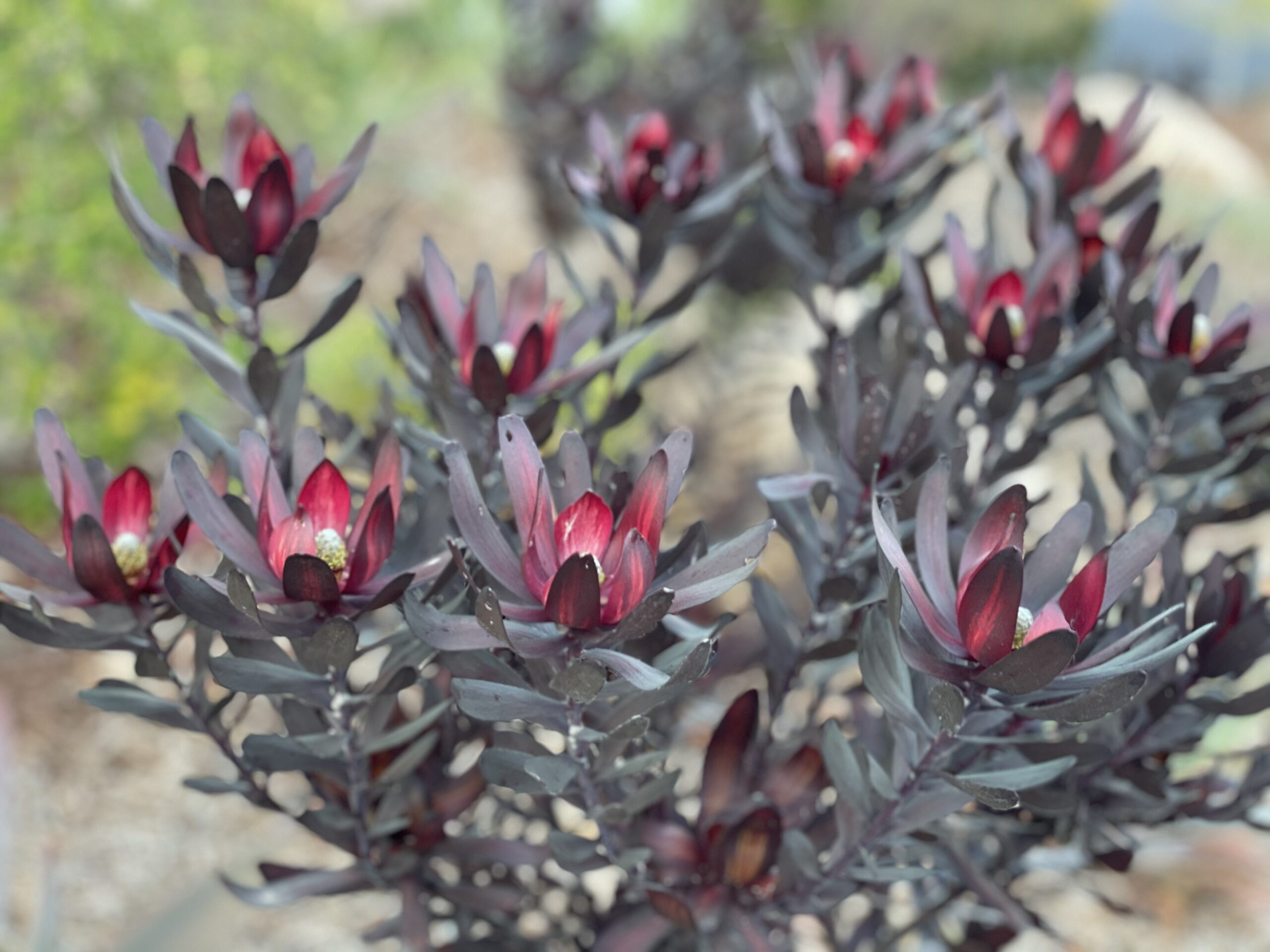
Expand Your Palette: Waterwise Plants for your Landscape
There’s nothing more thrilling to plant lovers than discovering new plants to test in the garden. Here in the southernmost corner of California, we have
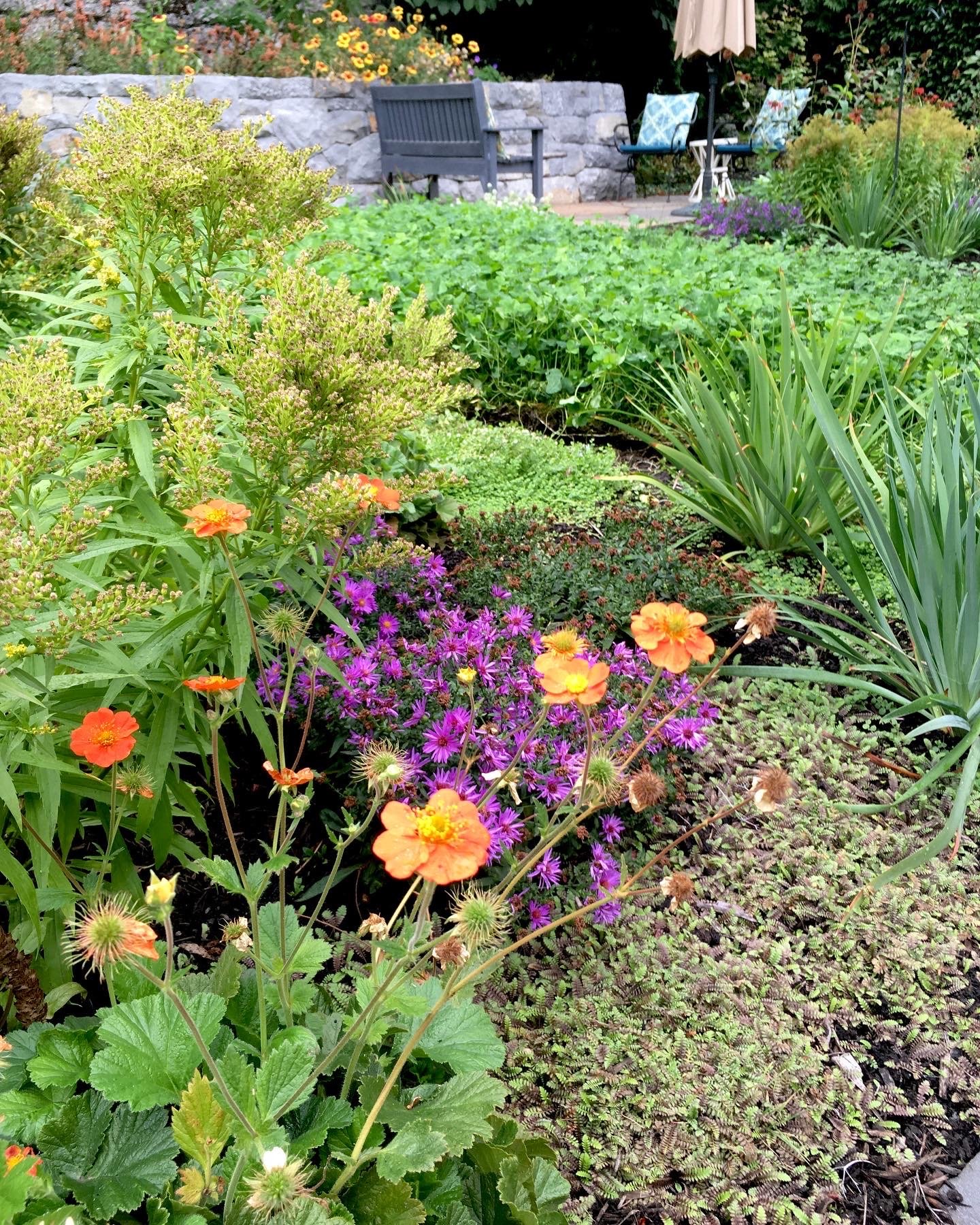
Nature Therapy from the Contemplative Garden
Winter 2022 Women’s hushed morning voices mingled with crashing waves and chattering crows. “The kettle’s still hot.” “Can you pass the honey?” Whoosh, crash, caw,

Portland Parks’ “Nature Patches”
Winter 2022 Nature is so beautiful when left to its own devices, yet crisply manicured lawns remain a status symbol. This is true in Portland,









Responses